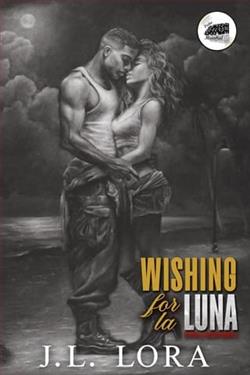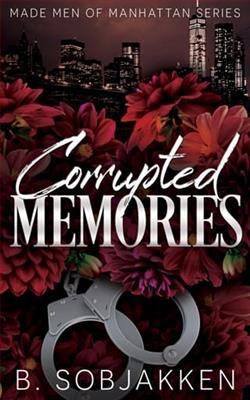Page 70 of The Lincoln Myth (Cotton Malone 9)
Danny Daniels
He shook his head and smiled. He’d paid over a million dollars for the book. Worth about a quarter of that, but still not a bad payday. Reality was that the bills did have to be paid, and gallivanting across the globe rarely did the trick.
So he was grateful for the gesture.
He’d miss Danny Daniels.
He approached the front window and watched the storm.
And wondered what Cassiopeia was doing.
CASSIOPEIA DEPOSITED THE LAST SHOVELFUL OF DIRT INTO THE hole and gently patted it into place.
Josepe had been buried. Her father, mother, and first love were gone. She felt alone. She should not be so sad, considering the awful things Josepe had done. But a melancholy had taken root inside her and she doubted it would fade anytime soon.
No love filled her heart.
Despite what she’d said to Josepe in that cave.
Instead, she was angry with both Stephanie and Cotton and wanted nothing more than to be left alone by them both.
Time for a clean break.
A new life.
Fresh challenges.
She stabbed the shovel into the moist earth and retreated to the gate.
The Spanish countryside was so peaceful, the day cool and sunny. Her own family’s estate was not far away. She’d many times visited this place. Now this would be her last. Another link to her past severed.
She found her phone, located her contacts, and scrolled to Cotton Malone.
Everything was there.
Mobile number, bookshop phone, email.
All were once something special to her.
Not anymore.
She hit DELETE.
The phone asked—ARE YOU SURE?
She was.
MALONE STILL HELD THE BOOK OF MORMON.
He’d place it up for auction and convert it into cash. Its words held no special significance for him, as they did for millions of others. Five days ago he’d thought his life pretty much in order. Now there’d been a 180-degree shift. He hadn’t been in love for a long time and he was just becoming accustomed to the feeling, adjusting to its demands. He’d killed Salazar because one, the SOB deserved it, and, two, there was no choice. He’d given the man a chance to stand down. Not his fault that it had not been accepted. Never did he like killing. But sometimes it just had to be done.
The United States of America was safe and secure.
Threat averted.
Justice had been done.
All was right, except for one thing.
He stared out at the rain.
And wondered if he would ever see Cassiopeia Vitt again.
WRITER’S NOTE
This book involved several field trips. Elizabeth and I visited Washington, D.C. Des Moines, Iowa. Salt Lake City, Utah. And Salzburg, Austria.
Now it’s time to separate the real from the imagined.
The meeting described in the prologue between Abraham Lincoln and Mrs. John Fremont happened. The location (the White House’s Red Room) is correct, and most of the dialogue is taken from historical accounts. General Fremont did indeed overstep his bounds, and Lincoln ultimately fired him. What Lincoln tells Jesse Fremont about freeing the slaves or saving the Union is taken verbatim from a reply Lincoln sent to a letter from Horace Greeley, the editor of the New-York Tribune, published in 1862. The note from James Buchanan and the document Lincoln reads from George Washington are my inventions, though Buchanan did say that he thought he might be the last president of the United States.
The Church of Jesus Christ of Latter-day Saints figures prominently in this story. It is a quintessential American religion—born, bred, and nurtured here. It is the only religion that includes the Constitution of the United States as part of its philosophy (chapters 37, 57). Without question, Mormons have played a role in American history, rising from a modest beginning to a church that now supports over 14 million members worldwide. They literally created and built the state of Utah.
Throughout the novel the words Mormons and Saints are used interchangeably. There was a time when Mormon would have been considered offensive, as that was a label applied in the 19th century by those who persecuted them. But that is no longer the case, and Mormon is now an accepted description. Even so, I allowed devout believers, like Rowan and Salazar, to keep to the word Saints when referring to their brethren. A modern term, LDS (Latter-day Saints), is common, but I decided not to use it here. Also, the head of the Church of Jesus Christ of Latter-day Saints is called either the president or the prophet. I kept to the latter so as not to create any confusion with presidents of the United States.
Apostles of the church are expected to devote themselves fulltime to their duties. Thaddeus Rowan, though, remains a U.S. senator. While that arrangement is an extraordinary one, there is precedent. Reed Smoot (chapter 11) served both as an apostle and senator in the early part of the 20th century.
Blood atonement, first described in chapter 2, was once a part of the Mormon community—or at least the idea of such. It grew in response to the violence those early believers were subjected to. Whether it was actually practiced is a matter of debate. One thing is certain—any thought or application of it disappeared long ago, and it is no longer part of Mormon theology. The same is likewise true for Danites (chapter 8), a group that no longer exists. What Sidney Rigdon is quoted as saying in chapter 8 was true then, but no more. Plural marriage was officially abandoned by the church on September 25, 1890 (chapters 18, 55).
Throughout the novel Josepe Salazar is visited by an angel, a figment of his disturbed mind. Nearly everything the angel says was taken from 19th-century Mormon doctrine, speeches, and sermons and, as with blood atonement and Danites, reflects the hostile world in which those people found themselves. None of that applies today. The angel Moroni, though, remains a centerpiece of Mormon theology (chapter 39).
Zion National Park (chapter 3) is accurately described. The legend of the 22 lost wagons is part of Mormon lore (chapter 11), but no trace of them has ever been found. The 1857 Mormon War happened, and Lincoln did in fact make a deal (as related in chapter 9) with Brigham Young. His words are quoted there exactly. Both sides honored that deal. The anti-polygamy 1862 Morrill Act was never enforced, and the Mormons stayed out of the Civil War. The supposed collateral for that deal (provided by both sides) was my invention.
The locales in Copenhagen, Kalundborg, Salzburg, Iowa, Washington, D.C., and Utah all exist. Readers of prior Cotton Malone adventures may recognize the Café Norden (chapter 10), which anchors Højbro Plads in Copenhagen. The vice president’s residence on the grounds of the Naval Observatory stands as depicted (chapter 25). The Hotel Monaco in Salt Lake City (chapter 26) and the Mandarin Oriental in the nation’s capital (chapter 38) are wonderful places.
The Washington, D.C., temple is a prominent Maryland landmark (chapters 50, 59). The Salt Lake temple (described in chapter 14) is an iconic monument, as is Temple Square surrounding it (chapter 61). The song quoted in chapter 11 is real, and where the prophet lives in Salt Lake City is accurately noted.
The record stone (mentioned in chapter 14) was excavated from the Salt Lake temple in 1993. Inside were various objects, left there by Brigham Young in 1867. The inventory provided in chapter 14 is accurate, except for the addition of Young’s message. History notes that Joseph Smith first glimpsed the golden plates inside a stone box. On October 2, 1841, Smith placed the original manuscript of Book of Mormon inside the Nauvoo Hotel cornerstone. What Brigham Young did—sealing objects, documents, and gold coins inside stone—became a sign of reverence (chapter 70), repeated at temples across the globe. That’s why it made sense to seal the collateral Lincoln sent west within the stone plaque Young donated to the Washington Monument (chapter 70). That gift is still there, mounted inside at the 220-foot level.
The murder of Joseph Smit
h and his brother on June 27, 1844, is fact (chapter 16). Edwin Rushton also existed, as did his journal. The White Horse Prophecy, quoted throughout (chapters 17, 18), was once part of Mormon folklore. No one knows when the prophecy was first memorialized, but most agree that it was long after its first utterance by Joseph Smith in 1843. The text in chapter 17 is quoted from Rushton’s journal, dated in the 1890s. The prophecy itself is so accurate, so detailed, that it begs the question of whether it was embellished after the fact. No matter, it was repudiated by the church in the early part of the 20th century (chapter 52), though mentions of it still exist in various Mormon texts.
What Brigham Young said in chapter 51—Will the Constitution be destroyed? No. It will be held inviolate by this people and, as Joseph Smith said, “The time will come when the destiny of the nation will hang upon a single thread. At that critical juncture, this people will step forth and save it from the threatened destruction”—is true. As is the prophecy of John Taylor, first announced in 1879 (chapter 51), which is also uncannily on target.
The original 1830 Book of Mormon described in chapters 20 and 30 is rare and valuable. The 1840 edition found in the Library of Congress (chapter 41) is there. Lincoln remains the first (and only) president to read it, and the dates of him having the book in his possession (noted in chapter 41) were taken from the records of the Library of Congress. All of the handwritten notes added to that book are fictional, but the passages quoted in chapter 43 are exact. The visit by Joesph Smith to President Martin Van Buren happened as told (chapter 21).
Salzburg is a marvelous city. The Goldener Hirsch has welcomed guests for many centuries (chapter 27), and the Hohensalzburg fortress still keeps guard overhead (chapter 30). St. Peter’s graveyard, the catacombs, and the Gertraude Chapel are accurately portrayed (chapters 34, 37), as is the towering Mönchsberg (chapter 48). Dorotheum (chapters 20, 30) is an actual European auction house of long standing.
Mary Todd Lincoln was dealt many tough blows. She lost nearly all of her children and her husband to early deaths. Her letter contained in chapter 28 is false, but its wording is drawn from her actual correspondence. Lincoln’s watch (as described in chapter 47) is on display at the Smithsonian’s National Museum of American History. The inscription noted within was found when the watch was opened in 2009. The addition of a second timepiece was my creation. Salisbury House, in Des Moines, Iowa, is truthfully described—its grounds, geography, and furnishings (chapters 53, 58). Only the addition of the garden cottage is fictional. Likewise, Blair House in Washington, D.C., exists, as does the parlor with the Lincoln portrait (chapters 55, 60).















